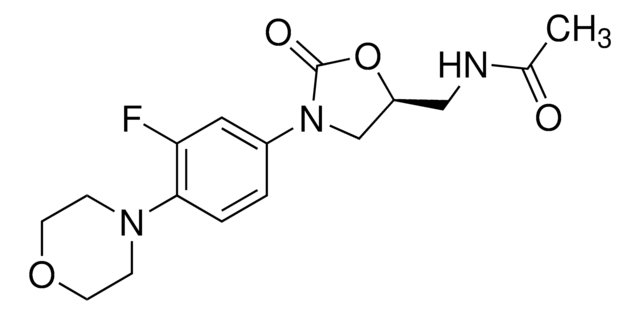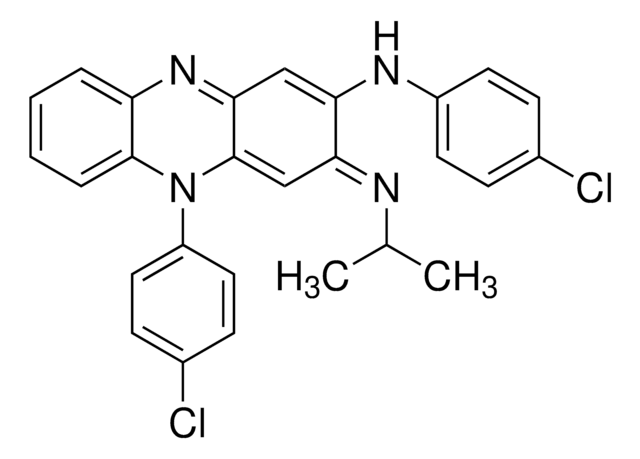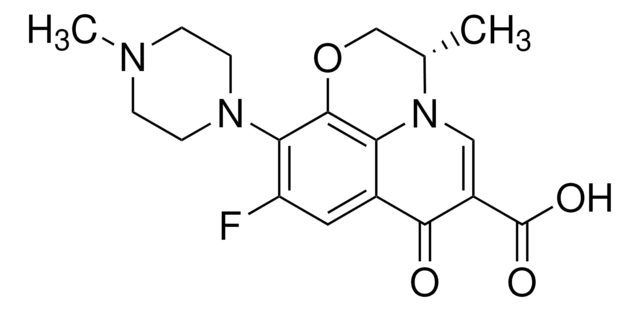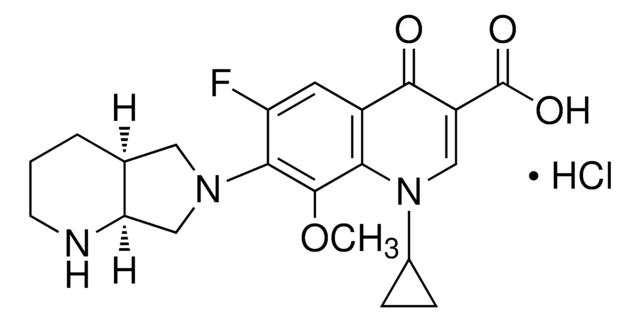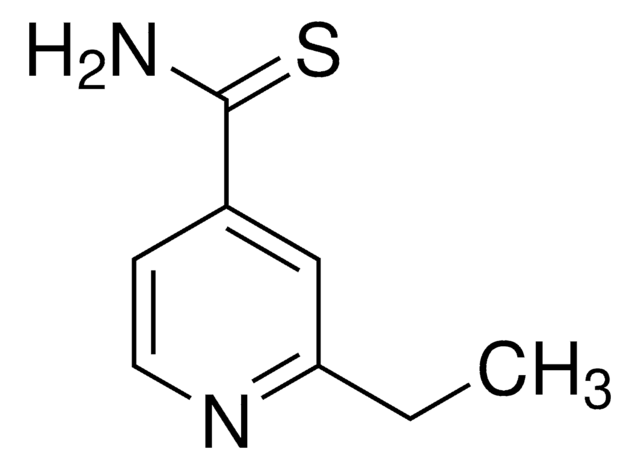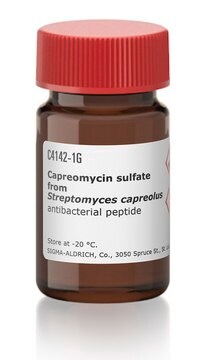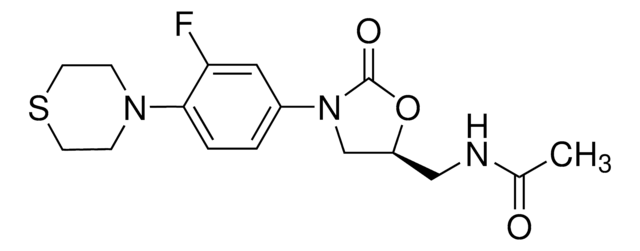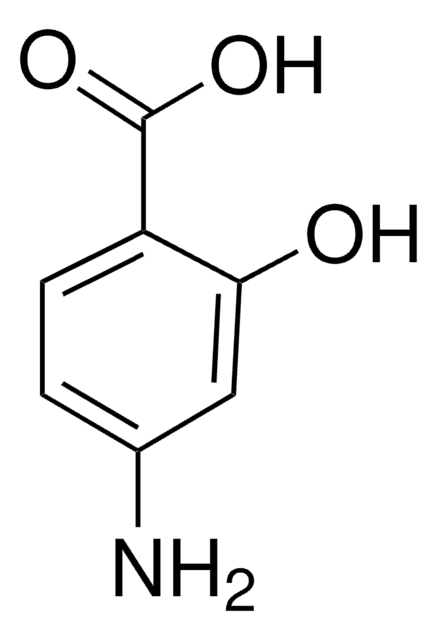Kluczowe dokumenty
PZ0014
Linezolid
≥98% (HPLC), powder, bacterial mRNA translation inhibitor
Synonim(y):
N-[[(5S)-3-[3-Fluoro-4-(4-morpholinyl)phenyl]-2-oxo-5-oxazolidinyl]methyl]acetamide, PNU-100766, U-100766
About This Item
Polecane produkty
product name
Linezolid, ≥98% (HPLC)
Poziom jakości
Próba
≥98% (HPLC)
Postać
powder
kolor
white to off-white
rozpuszczalność
DMSO: >20 mg/mL
temp. przechowywania
room temp
ciąg SMILES
CC(=O)NC[C@H]1CN(C(=O)O1)c2ccc(N3CCOCC3)c(F)c2
InChI
1S/C16H20FN3O4/c1-11(21)18-9-13-10-20(16(22)24-13)12-2-3-15(14(17)8-12)19-4-6-23-7-5-19/h2-3,8,13H,4-7,9-10H2,1H3,(H,18,21)/t13-/m0/s1
Klucz InChI
TYZROVQLWOKYKF-ZDUSSCGKSA-N
Szukasz podobnych produktów? Odwiedź Przewodnik dotyczący porównywania produktów
Opis ogólny
Zastosowanie
Działania biochem./fizjol.
Hasło ostrzegawcze
Danger
Zwroty wskazujące rodzaj zagrożenia
Zwroty wskazujące środki ostrożności
Klasyfikacja zagrożeń
STOT RE 1 Oral
Organy docelowe
Bone
Kod klasy składowania
6.1C - Combustible acute toxic Cat.3 / toxic compounds or compounds which causing chronic effects
Klasa zagrożenia wodnego (WGK)
WGK 3
Temperatura zapłonu (°F)
Not applicable
Temperatura zapłonu (°C)
Not applicable
Certyfikaty analizy (CoA)
Poszukaj Certyfikaty analizy (CoA), wpisując numer partii/serii produktów. Numery serii i partii można znaleźć na etykiecie produktu po słowach „seria” lub „partia”.
Masz już ten produkt?
Dokumenty związane z niedawno zakupionymi produktami zostały zamieszczone w Bibliotece dokumentów.
Klienci oglądali również te produkty
Powiązane treści
Poznaj analizę szlaków białkowych, w tym przesiewanie bibliotek chemicznych i modulowanie szlaków za pomocą małych cząsteczek.
Poznaj analizę szlaków białkowych, w tym przesiewanie bibliotek chemicznych i modulowanie szlaków za pomocą małych cząsteczek.
Nasz zespół naukowców ma doświadczenie we wszystkich obszarach badań, w tym w naukach przyrodniczych, materiałoznawstwie, syntezie chemicznej, chromatografii, analityce i wielu innych dziedzinach.
Skontaktuj się z zespołem ds. pomocy technicznej